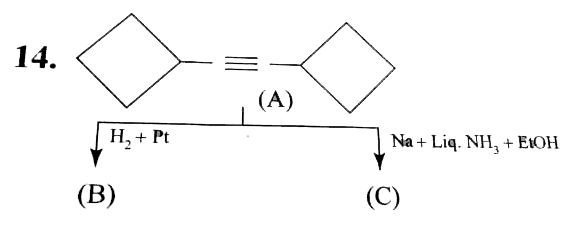
Compound (B) and (C) are :

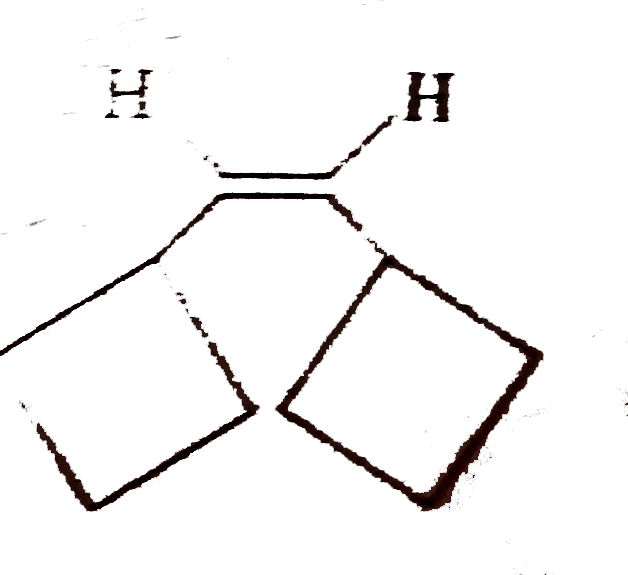
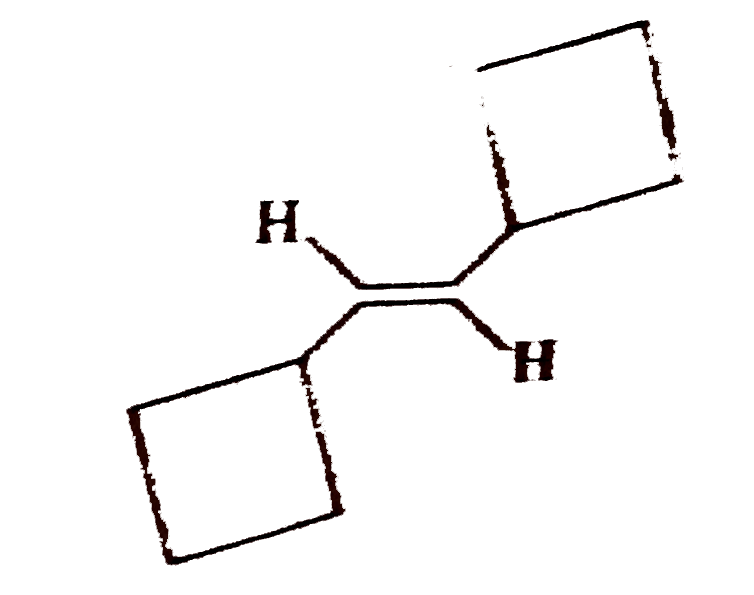
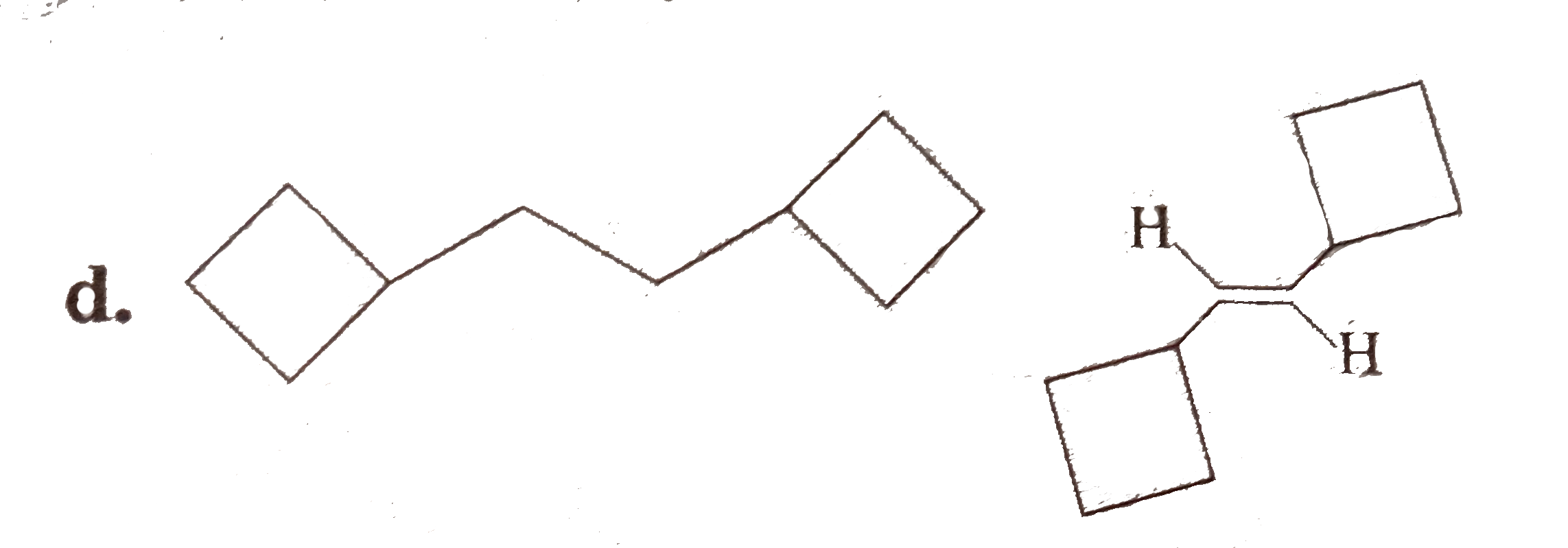
The correct Answer is:d
Cyclobutane, cyclopentane, and cyclohexane are more stable than cyclopropane and do not undergo catalytic hydrogenation at normal condition of temperature. (H2+Pt) converts (C≡C) to (C−C).
Brich reduction gives anti− addition of H2 and converts (C≡C) to (C=C). So the answer is (d).
Topper's Solved these Questions
- BOOK - CENGAGE CHEMISTRYCHAPTER - ALKENES AND ALKADIENESEXERCISE - Archives(ASSERTION-REASIOING)4videos
ALKENES AND ALKADIENES
- BOOK - CENGAGE CHEMISTRYCHAPTER - ALKENES AND ALKADIENESEXERCISE - Fill in the Blanks3videos
ALKENES AND ALKADIENES
- BOOK - CENGAGE CHEMISTRYCHAPTER - ALKENES AND ALKADIENESEXERCISE - Multiple Correct Answer Type41videos
ALKENES AND ALKADIENES
- BOOK - CENGAGE CHEMISTRYCHAPTER - ALKANES AND CYCLOALKANESEXERCISE - Archives13videos
ALKANES AND CYCLOALKANES
- BOOK - CENGAGE CHEMISTRYCHAPTER - ALKYNESEXERCISE - Exercises (Archives - Analytical and Desriptive Type)4videos
ALKYNES
Similar Questions
Knowledge Check
- Question 1 - Select One

Compounds (B) and (C) are:A B
B C
C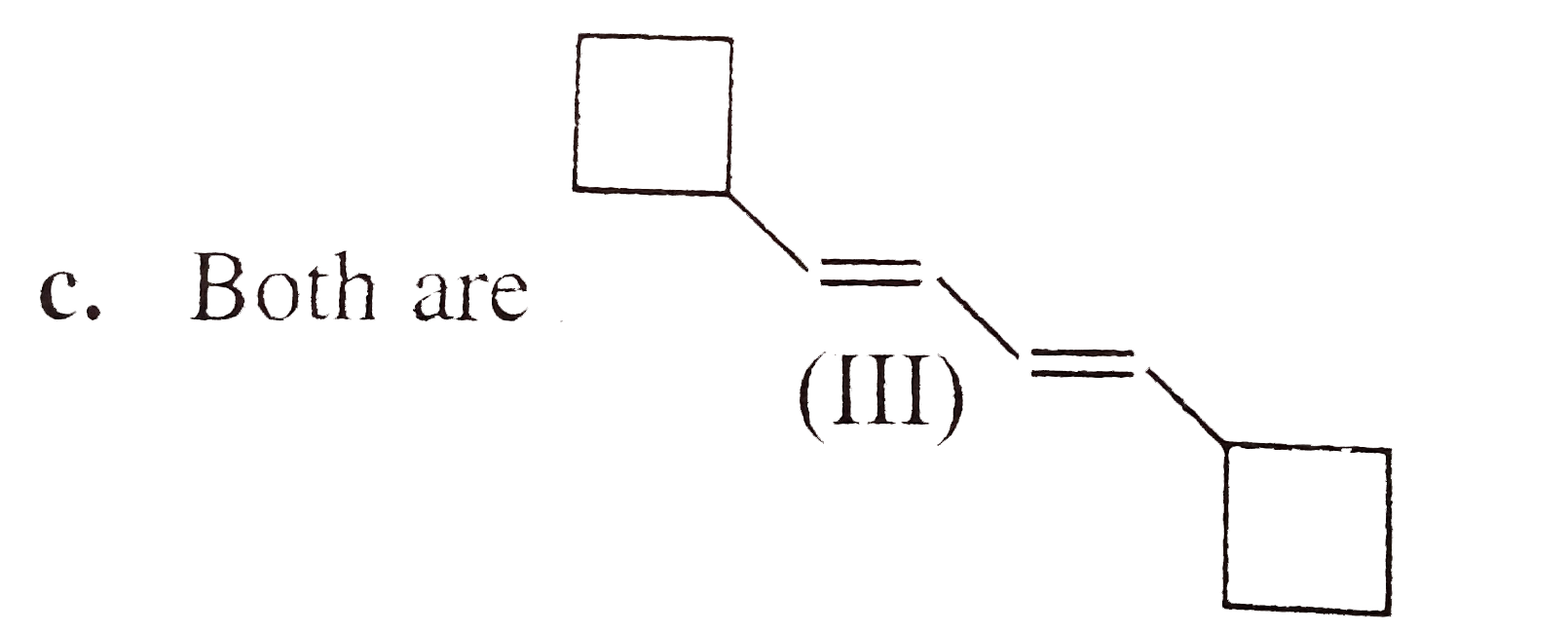 DB is (I) and C is (II)
DB is (I) and C is (II) - Question 2 - Select One

Compounds (B) and (C) are :A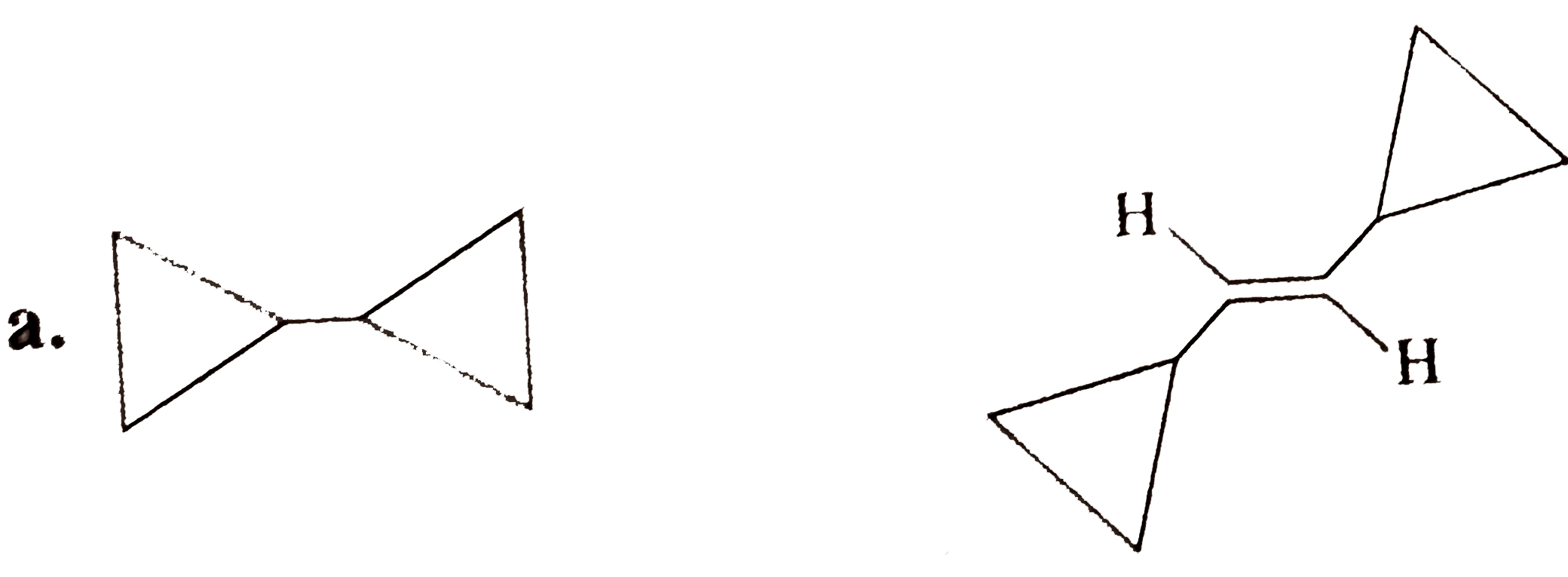 B
B C
C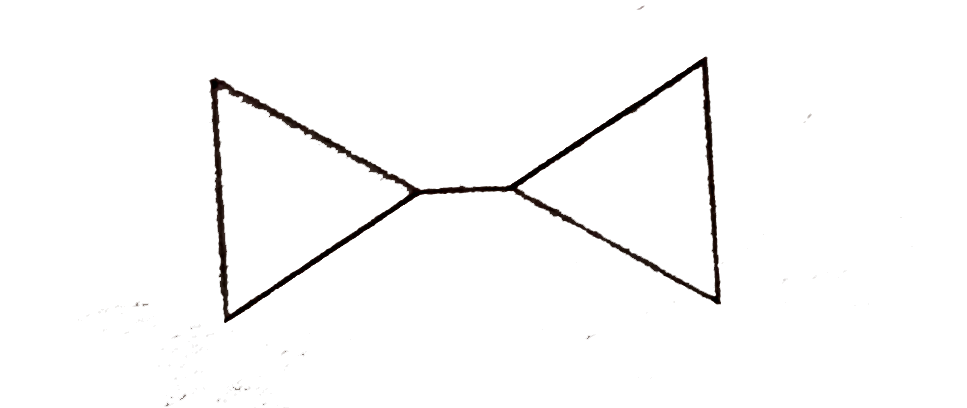 D
D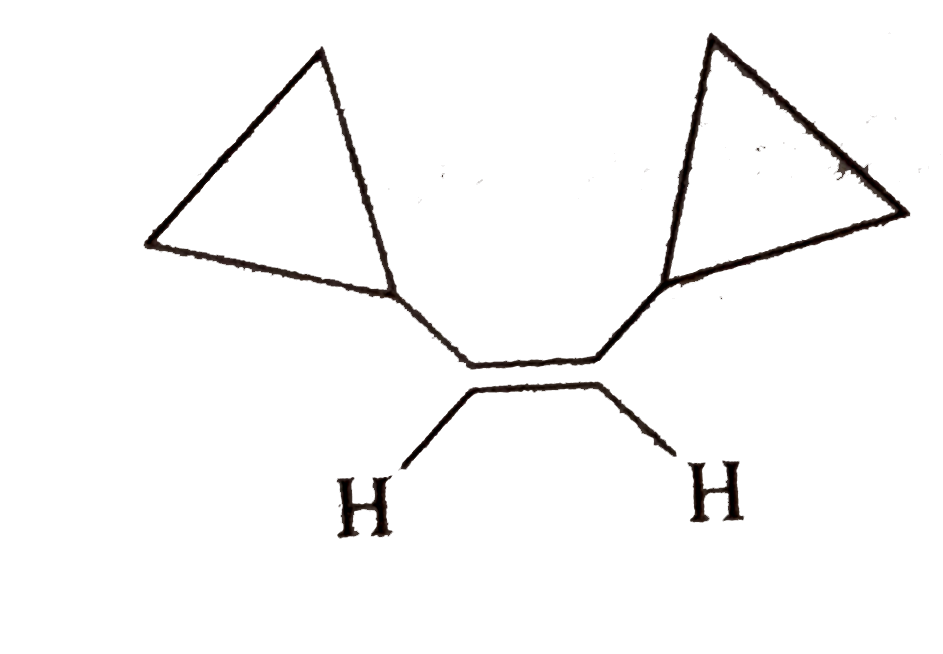
- Question 3 - Select One
R−≡(A)−≡−RLindlar's catalyst+H2−−−−−−−−−−−−→(B)

Compounds (B) and (C) are:A B
B C
C D(B) is (II) and (C) is (III)
D(B) is (II) and (C) is (III)
Consider the following reaction ,
C6H5NH2+CHCl3+KOHΔ−−→(A)H+/H2O−−−−−→(B)+(C)
The compounds (B) and (C) are :-View SolutionAn inorganic salt (A) is decomposed on heating to give two products (B) and (C). Compound (C) is a liquid at room temperature and is neutral to litmus while compound (B) is a colourless neutral gas. Compounds (A), (B) and (C) are
View SolutionAn inorganic salt (A) is decomposed on heating to give two products (B) and (C). Compound (C) is a liquid at room temperature and is neutral to litmus while compound (B) is a colourless neutral gas. Compounds (A), (B) and (C) are
View SolutionThree compounds (A),(B) and (C) are given.
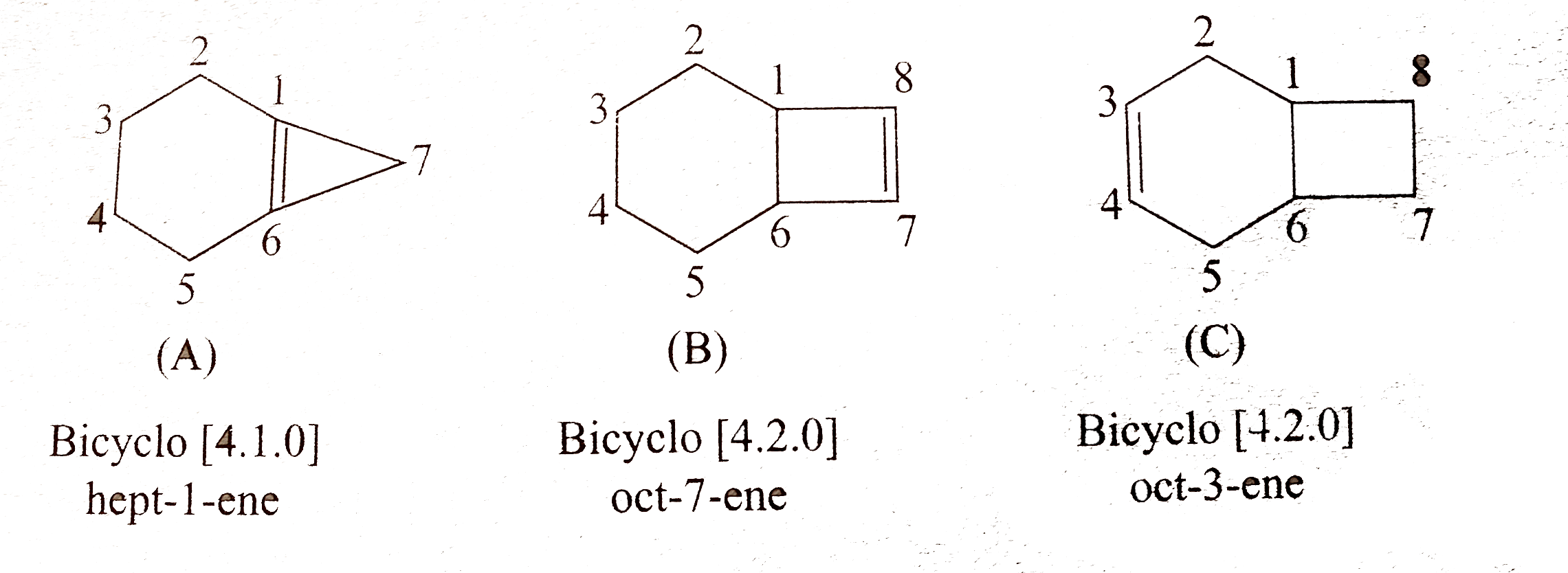
Which statements are correct about (A),(B), and (C) ?View SolutionA+H2O→B+HCI
B+H2O→C+HCI
Compound (A), (B) and (C) will be respectively :View Solution


